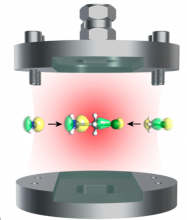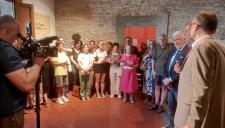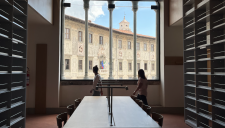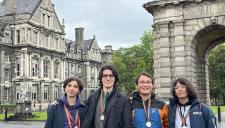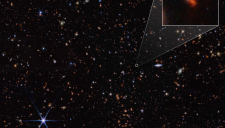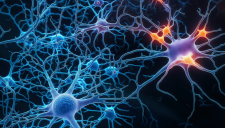Molecular orbital theory is known to be a fundamental tool to rationalize and predict electronic properties and reactive pathways of molecular systems in chemistry. An international team of researchers from Italy and Norway has formulated, for the first time, a molecular orbital theory to investigate induced changes in molecules by quantized electromagnetic fields. Using a properly designed theoretical methodology, the team proved that the ground state chemical reactivity can be modified by simple confinement in space. They also show how this method is able to capture a consistent part of the electron-photon interaction. The developed methodology can have profound impact in the formulation of novel techniques to control chemical reactivity. The work has now been published in Nature Communications.
Tuesday 15 March 2022.
Cavity quantum optics deals with the interactions of photons and molecules inside an optical cavity, i.e., in the region between two closely spaced mirrors. Perfect optical cavities can only support certain frequencies of light. In addition, the intensity of the associated electromagnetic field is enhanced by the confinement. This leads to profound changes in chemical reactivity when molecules are placed inside an optical cavity. The formation of hybrid states (polaritons) having both matter and light character allows for the optical manipulation of reactive events on demand. This aspect has already been observed in the pioneering experiments performed by Prof. Thomas Ebbesen’s group at the University of Strasbourg. However, the physics underlying these phenomena is still not fully understood.
The simplest approach that theoretical chemists commonly use to gain information about chemical reactivity is based on molecular orbital analysis. This tool allows, through a visual representation of the electrons in space, an intuitive interpretation to chemical reactivity. The picture provided by molecular orbital theory can be easily translated into the reaction mechanisms usually employed in organic chemistry. Despite the increased popularity of the strong coupling problem, a molecular orbital theory for molecules in optical cavities had not yet been developed.
The work by Rosario R. Riso, PhD student at the Norwegian University of Science and Technology, and colleagues, represents the first molecular orbital theory able to incorporate the effect of a quantized electromagnetic field in a consistent manner. The approach is able to provide an intuitive and visual interpretation of chemical reactivity and at the same time describe a significant part of the electron-photon interaction. Moreover, the method will be the starting point for the formulation of ab initio perturbation theories for coupled electron-photon systems. «The new framework will be also crucial to model, in a simple way, ionization processes in the strong coupling regime», says the corresponding author Prof. Henrik Koch from SNS and NTNU.
«These cavity phenomena -says Mr. Riso - will pave the way towards the modification of molecular reactivity on-demand, through the customization of the interactions between molecules. To put it simply, it will be possible in the future to engineer everyday reactions making the production of drugs or everyday chemicals like paints and polymers more efficient and potentially less wasteful».
The team is composed of researchers from several European institutions: Scuola Normale Superiore (SNS) and Istituto per i Processi Chimico-Fisici of CNR (IPCF-CNR), both in Pisa (Italy) and the Norwegian University of Science and Technology (NTNU) in Trondheim (Norway).

